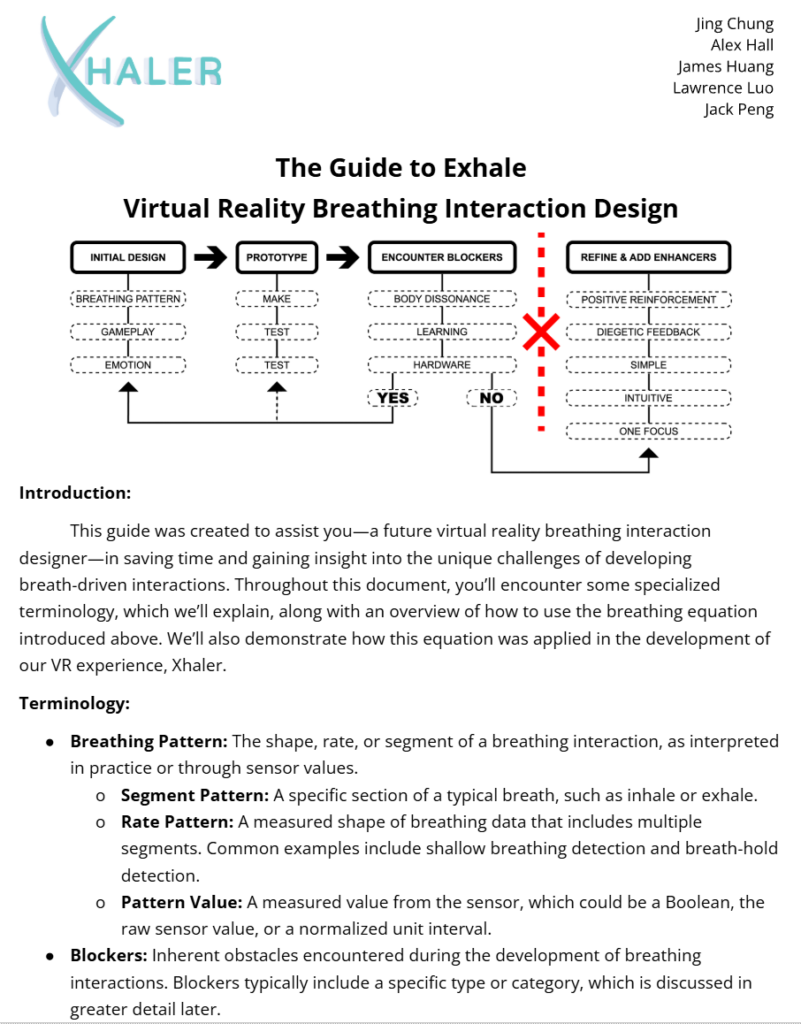This week, we rehearsed and conducted our final presentation. We compiled everything we had learned about breathing and collaboratively developed a “breathing equation.” In the end, we produced a Virtual Reality Breathing Interaction Design to inspire future game developers interested in breath-based gameplay.
Final Video
Breathing Equation

This is our key advice for developers working on breathing interactions in virtual reality: use what we call our “Breathing Equation.” Start with an initial design that clearly outlines the breathing pattern, its gameplay function, and the emotional impact it aims to deliver. Then, rigorously test this design to identify potential blockers. Common challenges include body dissonance—where the perceived breathing interaction doesn’t align with the player’s body context—and learning difficulties, where players may not understand or recognize the intended breathing mechanic. Also there is hardware limitations, such as sensor overload or lack of appropriate equipment, can also impede the experience. To address these blockers, you can either revise elements of the initial design or develop entirely new systems. Once the blockers are resolved, developers can begin to add enhancers—elements that enrich and deepen the breathing interaction to elevate immersion and player engagement.
Advice Document: Virtual Reality Breathing Interaction Design

Link To Full Document:
https://docs.google.com/document/d/14eiAF4Q5qeET2Nr_gBZtIYQOaqhE57RS/edit?usp=drive_link&ouid=111545691166698446191&rtpof=true&sd=true
Future Plan
Looking ahead, we’re planning to continue developing Xhaler. We believe this project has real potential for alt-control game showcases and interaction design conferences. Our next steps include:
- Submitting to the GDC Alt-Control Showcase, where we’ll shorten and refine the experience for high-throughput demos.
- Applying to the Serious Play Conference (August 13–15, 2025 in Rochester, NY), where we can present the system in an academic and industry context.
- Exploring submission opportunities for CHI PLAY and other ACM conferences focused on interfaces and embodied interaction.
We’re also considering writing a technical paper or design case study based on the breathing equation and our development approach. There’s a lot more to explore—like integrating new sensors, using breath in cooperative multiplayer experiences, or combining it with narrative-driven gameplay.
